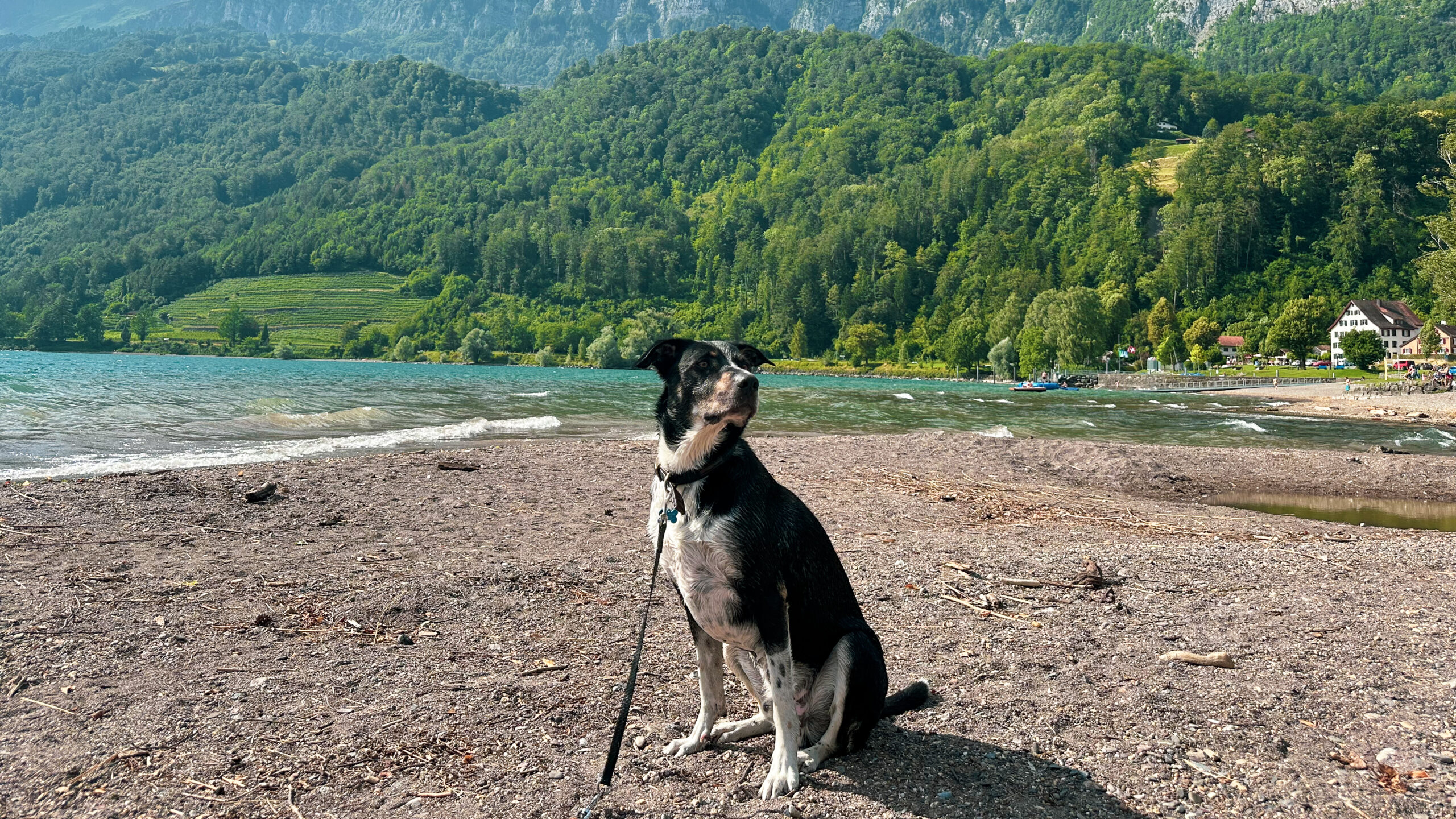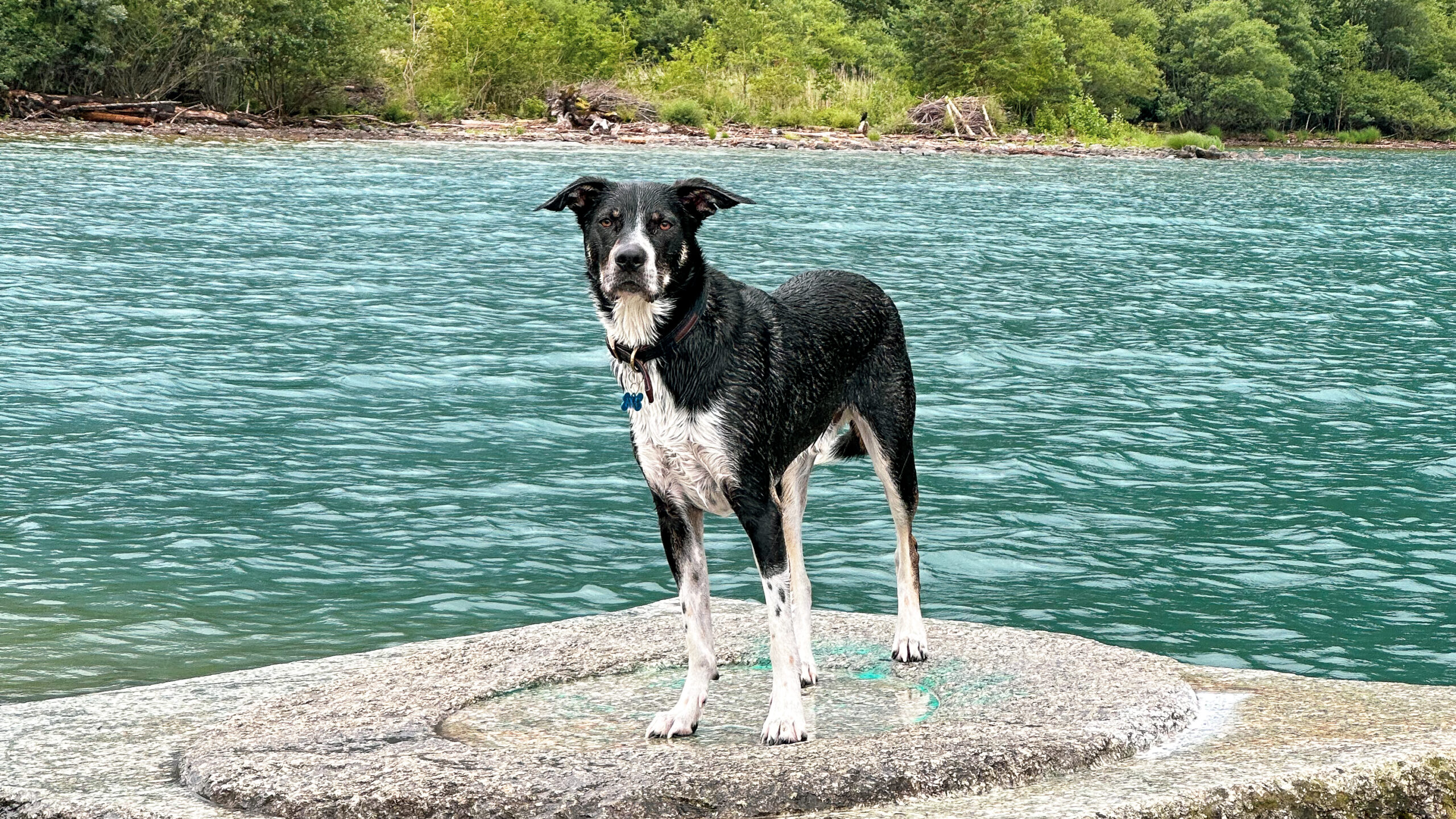**This post contains affiliate links, which means I may earn a commission if you click on the link and make a purchase. Rest assured, I only recommend products and services that I personally use or believe will add value to my readers.**
A Guide to Dog-Friendly Travel in the UK and Europe
Embarking on a journey with your furry friend across the picturesque landscapes of the UK and Europe can be a heartwarming experience. Whether you’re exploring charming British villages, strolling through historic European cities, or hiking scenic trails, travelling with dogs offers a unique bond and unforgettable memories.
In this guide to dog-friendly travel, we’ll delve into essential tips for seamless and joyful travel across the UK and Europe, this includes Pet Documentation and Vaccinations, Road Trip Comfort and Safety, Adapting to New Surroundings, and What to Pack for your Pet.
Pet Documentation and Vaccinations
Now, this part is a little lengthy, but it is essential to get right; however, if you just want a quick guide, there is a ‘Pet Travel Checklist’ at the bottom of this section.
It is worth noting that UK-issued pet passports are no longer valid for travel in the EU and Ireland; however, if your pet’s passport was issued in the EU or Ireland, then this document remains valid for travel. So, if you are planning a trip with your pooch and do not have a pet passport, then an Animal Health Certificate (AHC) is the necessary document to be acquired.
The AHC generally costs in the region of £150-200, but varies depending on your vet; this will detail your and your pet’s details, including microchip number and vaccinations. An Animal Health Certificate is necessary for every trip you decide to take and has to be acquired within 10 days before your first entry point. Once you’ve entered the EU, the document is valid for 4-months for any onward travel within the EU and your return to the UK.
Alongside your AHC, your pet will also need a rabies vaccination and a tapeworm treatment. The rabies vaccination has to be administered at least 21 days before your trip, and your pooch has to be at least 12 weeks old; in most cases, this vaccination lasts for 3 years, you can double-check this with your vet. This is likely to cost at least £50, again, depending on your vet.
And finally, the tapeworm treatment will have to be administered between 24 – 120 hours before your first entry point into the EU; in most cases, your pooch will also need to receive a tapeworm treatment before returning to the UK, so this will require a tiny bit of research and locating a vet at your destination. The tapworm treatment will cost around £30.
Pet Travel Checklist:
- An Animal Health Certificate issued within 10 days of arriving in the EU or Northern Ireland. An AHC is then valid for 4 months for any onward travel and return to the UK.
- Your pet has to have a microchip; their microchip number when scanned will have to be an exact match on the Animal Health Certificate.
- A Rabies vaccination at least 21 days before arriving in the EU or Northern Ireland. Usually, a rabies vaccination is valid for 3 years.
- A Tapeworm treatment between 24-120 hours before entering the EU or Northern Ireland. This will also be required when returning to the UK, unless you are returning from Finland, Ireland, Northern Ireland, Malta or Norway.
Road Trip Comfort and Safety
Embarking on a road trip presents an exhilarating opportunity to delve into the captivating landscapes and diverse cultures that the UK and Europe have to offer, and sharing this adventure with your dog can elevate the experience to a whole new level. Ensuring the comfort, safety, and well-being of your furry companion during this journey is paramount, and a few key practices can greatly contribute to a smooth and enjoyable road trip for both you and your pet.
One of the most important investments you can make for your pet’s security while on the road is a dedicated pet seatbelt or harness. These specialized accessories are designed to restrain your pet in a manner that prevents unnecessary movement within the vehicle, reducing the risk of injury during sudden stops or accidents. If you have a smaller pooch, you may want to consider a pet carrier instead.
Don’t forget to plan in regular exercise, toilet and hydration stops for your dog.
Advertisement…
Adapting to New Surroundings
When you arrive at your destination, take some time to help your pet adjust to the new environment. Allow them to explore their new surroundings and establish a sense of comfort. Stick to their regular feeding and walking schedule as much as possible to minimize stress.
Sometimes, adapting to unfamiliar environments can be quite a process for our beloved pets. When transitioning them to new surroundings, it’s essential to be mindful of their emotional well-being. One effective strategy to facilitate this adjustment is to bring along familiar items, for example, their cozy bed or their favourite toys.
What to Pack for your Pet
It is crucial to assemble a dedicated bag that caters to every requirement of your pet. Just as you prepare your own travel necessities, taking the time to meticulously organize a bag tailored to your pet’s needs can significantly enhance the overall experience of your adventure, both for you and your beloved furry companion. Begin by incorporating items that offer comfort and familiarity to your pet. Including their cherished toys, soft blankets, and bedding will play a pivotal role in establishing a home-like atmosphere even when away.
Ensuring a seamless and enjoyable journey involves packing an ample supply of your pet’s regular food, as sudden changes in diet could potentially result in digestive discomfort. Alongside this, including a selection of treats serves not only as a reward for good behaviour but also maintains some routine amidst the excitement of travel.
A first aid kit catering to your pet’s needs is vital. This kit should encompass essentials such as bandages, antiseptic wipes, tweezers, and any prescribed medications or treatments your pet may require. It is equally important to have readily available contact details for a local vet at your destination, just in case.
Venturing outdoors with your pet mandates certain essentials, including a collar and lead, poo bags, and an ample supply of water to ensure their hydration.
Advertisement…
Travelling with pets can be incredibly rewarding, but it requires careful planning and consideration. By following these tips, you’ll ensure a stress-free and enjoyable adventure for both you and your furry companion. From hiking trails to exploring new cities, there’s nothing quite like experiencing the world together. Remember, every pet is unique, so tailor your travel plans to suit their specific needs. Safe travels!




